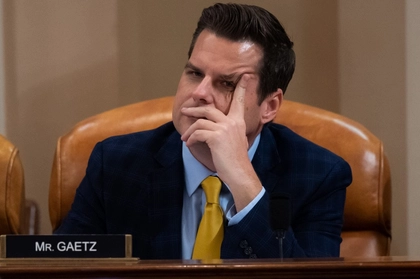The Washington Post reported on Saturday, Aug. 17, citing unnamed diplomatic sources, that indirect talks between Kyiv and Moscow set up by Qatar have been put on hold following Ukraine’s shock Aug. 6 incursion into Russia’s Kursk region.
There had been forewarning of the proposed talks with both sides keeping the plans close to their chests. They would not have involved face-to-face negotiations between the two sides, but it was hoped that by being on neutral ground and working through intermediaries both Moscow and Kyiv had signaled an intention to make progress.
JOIN US ON TELEGRAM
Follow our coverage of the war on the @Kyivpost_official.
The news site said the talks were intended to attempt to come to an agreement to stop attacking each other’s energy infrastructure, which some officials involved in the negotiations hoped would be the first step towards a total ceasefire and an end to the war.
Russia has repeatedly hit Ukraine’s power grid with cruise missiles and drone strikes since the start of the February 2022 full-scale invasion. Ukraine has conducted a campaign of its own, using long-range drones to attack Russian oil facilities reducing its oil refining capacity by an estimated 15 per cent over the past year or so.
The talks have now been postponed by Russia in response to the cross-border incursion by the Armed Forces of Ukraine (AFU), which President Vladimir Putin called a “provocation” and a member of the Moscow delegation to Doha described as “an escalation.”

Ukraine Critic and Trump Loyalist Matt Gaetz Withdraws Nomination as US Attorney General
An anonymous diplomatic source is quoted as saying that Russia hadn’t called off the talks but said they needed time to consider the current situation. Ukrainian representatives said they were still ready to go to Doha as planned, even though they had expressed pessimism that anything concrete would come out of the talks. Qatar turned down Kyiv’s offer as it thought there was little to be gained by a one-sided summit.
Ukrainian forces say they are making progress in the Kursk region and are still moving forward contrary to Russia’s claim. On Friday the Ukrainian air force said it had destroyed a strategically important bridge over the Seim River in the Glushkovo district. Unconfirmed reports said they had struck a second bridge effectively trapping a large force of Russian troops and civilians in the area, the Russian millblogger Military Observer reported.
Glushkovo lies about 25 kilometers (15 miles) north of the border with Ukraine and is roughly 65 kilometers (40 miles) west of Sudzha, which had been the focus of Ukraine’s initial cross-border assault last week.
Russian Foreign Ministry spokesperson Maria Zakharova said Ukraine had likely used a US-made High Mobility Artillery Rocket System (HIMARS) to attack the bridge, while confirming that the bridge had been completely destroyed. That contradicts the Ukrainian claim that the bridge was brought down by an aerial attack.
The Seim bridge was the main Russian logistics route for delivering combat supplies, ammunition and food into the area, and was likely to be a precursor for a further Ukrainian move forward. On Thursday, the Kursk region’s acting Governor, Alexey Smirnov announced the “mandatory evacuation” of the Glushkovo district another signal that the Kremlin’s claims that Ukrainian forces had been stopped and were being forced back were inaccurate.
You can also highlight the text and press Ctrl + Enter






